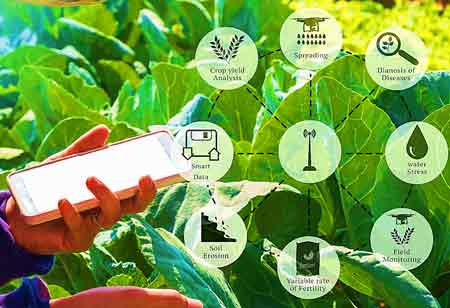Plants grown in natural habitat conditions comprising rich nutrients and microbes develop better-resisting capacity when compared to the conventionally designed group of plants
The significant difference between sustainable and conventional agriculture practices is the method of growing crops. The critical components involved in both methods of operation are soil, crop, water, disease, pest, and water management. Often the methods employed in carrying out the process differ among themselves even though they aim at the expected target to be achieved. Sustainable agriculture points out the practices that can be employed to improve production rates while minimizing the factors causing its overall depreciation over time.
An overview of sustainable agriculture practices can be summarized as:
Soil fertility
The conventional mode of agricultural practices ensured the fertility rates of the soil by the timely and sufficient dosage of essential nutrients and minerals such as potassium, nitrogen, and phosphorous. They were added to the soil through chemical fertilizers that are extensively prepared on plants in large-scale units. A higher quantity of fertilizer input can result in soil quality and plant growth degradation. Sustainable practices ensure the soil quantity by implementing crop rotation on a periodic basis and by the use of bio fertilizers in the form of compost and green manure. Such practice prevents the accumulation of chemicals in the soil surfaces and ensures long-term fertility.
A sustainable mode of farming ensures the use of minimal inorganic substances and believes in the self-immunity development taken up by plants and animals
Crop diversification
The majority of conventional farming methods rely on monoculture, where a particular set of crops is grown yearly on the farmland for a continuous period of time. Such unhealthy practices lead to the loss of nutrients and minerals, as the site needs to be replenished periodically by using chemical fertilizers and additives. Pesticides, fungicides, and fertilizers used to fill and shut off the bugs, when used in higher quantities, lead to the agglomeration and sedimentation of unwanted chemicals over time in the soil surface. Sustainable agriculture practices ensure soil fertility through proper crop rotation and control the effective growth of pests and weeds within the site.
Better water management
The uncontrolled use of chemical fertilizers, pesticides, and fungicides in employing conventional agriculture practices can lead to the degradation of soil nature and can cause a downfall in the rates of crop production. Aggregating the chemicals in the soil surface would cause the pollution of the water bodies associated with them as they can be potentially leached into them during the events of heavy rainfall and water drainage. It can pollute and intoxicate water resources such as rivers, streams, wells, and ponds depending on the amount of washed-off substance. Sustained practices hinder the potential scenario of water pollution by leaching chemical components into them by neglecting the use of chemical fertilizers and controlling measures. They tend to promote the practice of drip irrigation, which can reduce soil erosion and evaporation within the farmlands and helps in controlling the growth of weeds and other unwanted plant growth.
Commercial growth
When carried out on a commercial scale, the plants undergo rigorous spraying and dipping in a large number of chemical fertilizers and fungicides before the planting process. A sustainable mode of farming ensures the use of minimal inorganic substances and believes in the self-immunity development taken up by plants and animals. Plants grown in natural habitat conditions comprising rich nutrients and microbes develop better-resisting capacity when compared to the conventionally designed group of plants. Sustainable agriculture promoters use naturally synthesized pesticides and fungicides to counter the need for chemical substituents in preventing fungal and pest growth.



